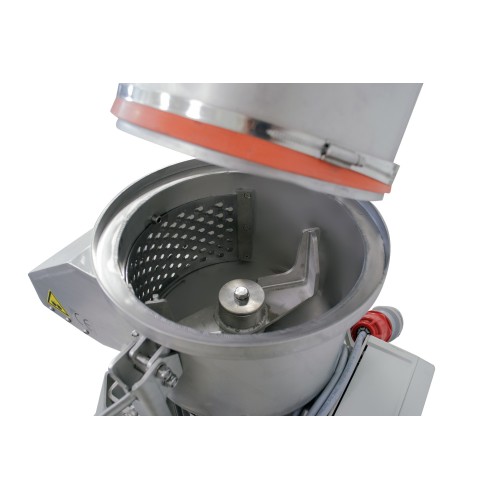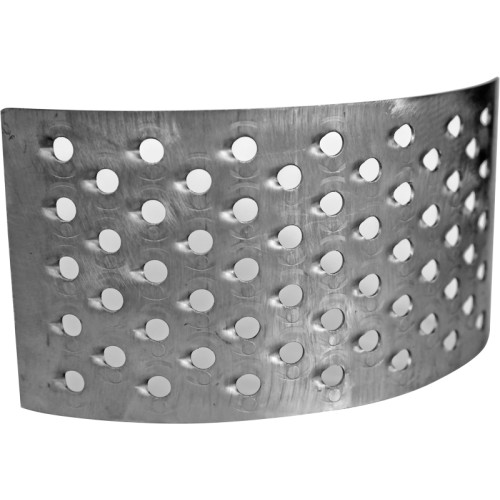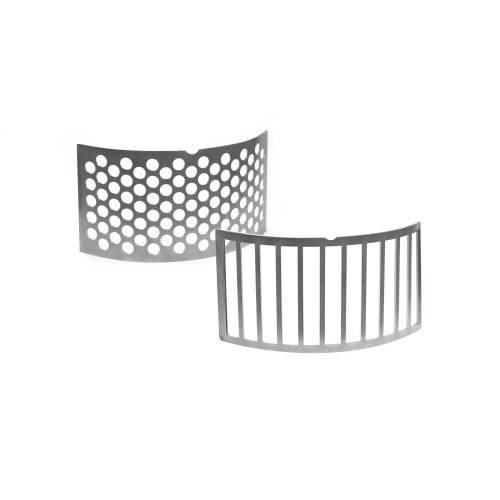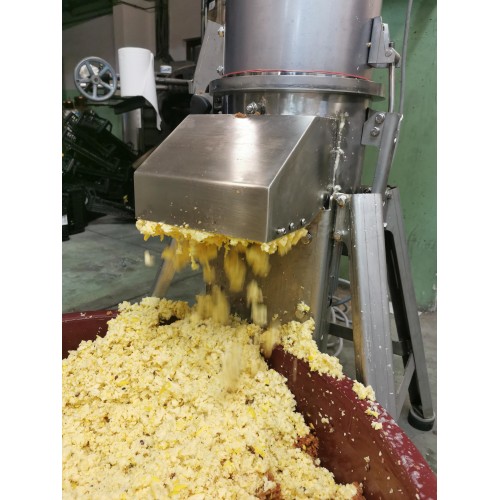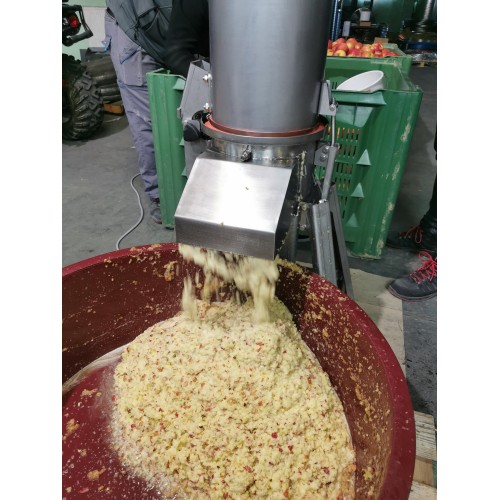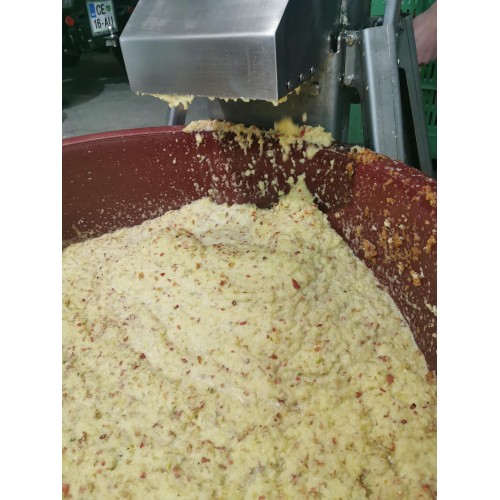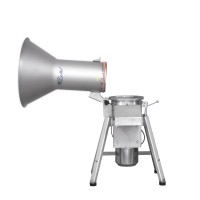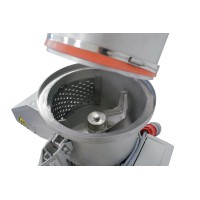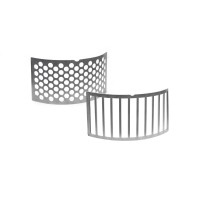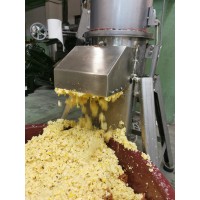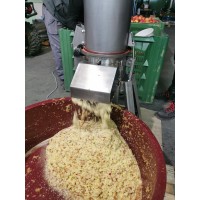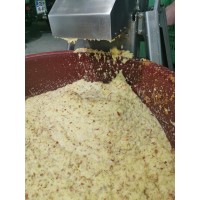Elektryczny rozdrabniacz do owoców i jabłek ZOTTEL MMS55

DPD - Dostawa do Latvia (1 dni roboczych) - 21.79€
Express Post - Dostawa do Latvia (1 dni roboczych) - 61.09€
UPS Standard - Dostawa do Latvia (2 dni roboczych) - 73.31€
Itella Smartpost - Dostawa do Latvia (2 dni roboczych) - 87.97€
Itella Smartpost Parcel Locker - Dostawa do Latvia (2 dni roboczych) - 87.97€
Latvian Post - Dostawa do Latvia Priorytetowa (1–2 tygodnie) - 87.97€
UPS Express - Dostawa do Latvia (1 dni roboczych) - 87.97€
- Pojemność: 4200 kg/h
- Wymiary: 580 x 680 x 1510 mm
- Ostrza: 3
- Waga: 98 kg
- Moc silnika elektrycznego: 5,5 kW
- Napięcie zasilania: 400V, 50Hz
- Liczba obrotów: 1450 obr./min
- Wyprodukowano w Słowenii
Jest zaprojektowany do kruszenia różnych rodzajów owoców, takich jak jabłka, gruszki, pigwy, rabarbar, aronia, brzoskwinie, morele, figi, oraz warzyw takich jak marchew, papryka, buraki, pomidory, cebula i chrzan. Przed kruszeniem należy usunąć pestki.
Stopień kruszenia można dostosować poprzez zmianę ostrza. Standardowe wyposażenie obejmuje trzy różne ostrza, które można stosować w zależności od rodzaju owocu/warzywa i pożądanej grubości rozdrobnionej masy owocowej.
Krusher owocowy, znany również jako młynek do owoców, służy do kruszenia owoców na drobną miazgę lub pulpę. Ten proces jest niezbędnym krokiem w różnych zastosowaniach związanych z przetwarzaniem owoców. Oto główne zastosowania krushera owocowego:
1. Ekstrakcja Soku:
Przygotowanie do Tłoczenia: Kruszenie owoców na miazgę ułatwia tłoczenie i ekstrakcję soku. Jest to szczególnie ważne dla owoców o twardej strukturze, takich jak jabłka i gruszki.
Zwiększenie Wydajności: Kruszenie owoców zwiększa powierzchnię, co pozwala uzyskać więcej soku w porównaniu do tłoczenia całych owoców. Użyj hydroprasy Zottel do szybkiego, efektywnego i bezwysiłkowego tłoczenia rozkruszonych owoców.
2. Fermentacja:
Produkcja Wina: W produkcji wina kruszenie winogron rozbija skórki, uwalniając sok i miąższ, co jest niezbędne do fermentacji. Dzięki temu drożdże mają łatwiejszy dostęp do cukrów zawartych w owocach.
Produkcja Cydru: Podobnie jak wino, produkcja cydru polega na kruszeniu jabłek w celu uzyskania pulpy, która może być fermentowana na alkoholowy cydr.
3. Produkcja Dżemów i Konfitur:
Przygotowanie Tekstury: Do produkcji dżemów, galaretek i konfitur owoce muszą być rozkruszone, aby uzyskać pożądaną konsystencję. Proces kruszenia rozbija owoce, co ułatwia ich gotowanie i mieszanie w gładką masę.
4. Musy Owocowe:
Gładka Konsystencja: Kruszenie owoców na drobną pulpę to pierwszy krok w przygotowywaniu musów, które są wykorzystywane w różnych zastosowaniach kulinarnych, w tym w jedzeniu dla niemowląt, sosach i deserach.
5. Produkty Owocowe:
Jednorodna Mieszanka: W produktach takich jak skórka owocowa, sosy czy niektóre cukierki, jednorodna masa owocowa zapewnia spójny smak i teksturę.
Podsumowując, krusher owocowy służy do rozdrabniania owoców na formę możliwą do przetwarzania, ułatwiając ekstrakcję soku, fermentację oraz tworzenie różnych produktów owocowych. Jest to niezbędne narzędzie zarówno w małych działaniach domowych, jak i w dużych przemysłowych przetwórniach owoców.
Standardowe wyposażenie: konstrukcja ze stali nierdzewnej, silnik 5,5kW, 3 ostrza: okrągłe otwory Ø8, okrągłe otwory Ø14 i prostokątne otwory 17x112mm.
Dodatkowe wyposażenie: stal nierdzewna stojak h=160 mm.


